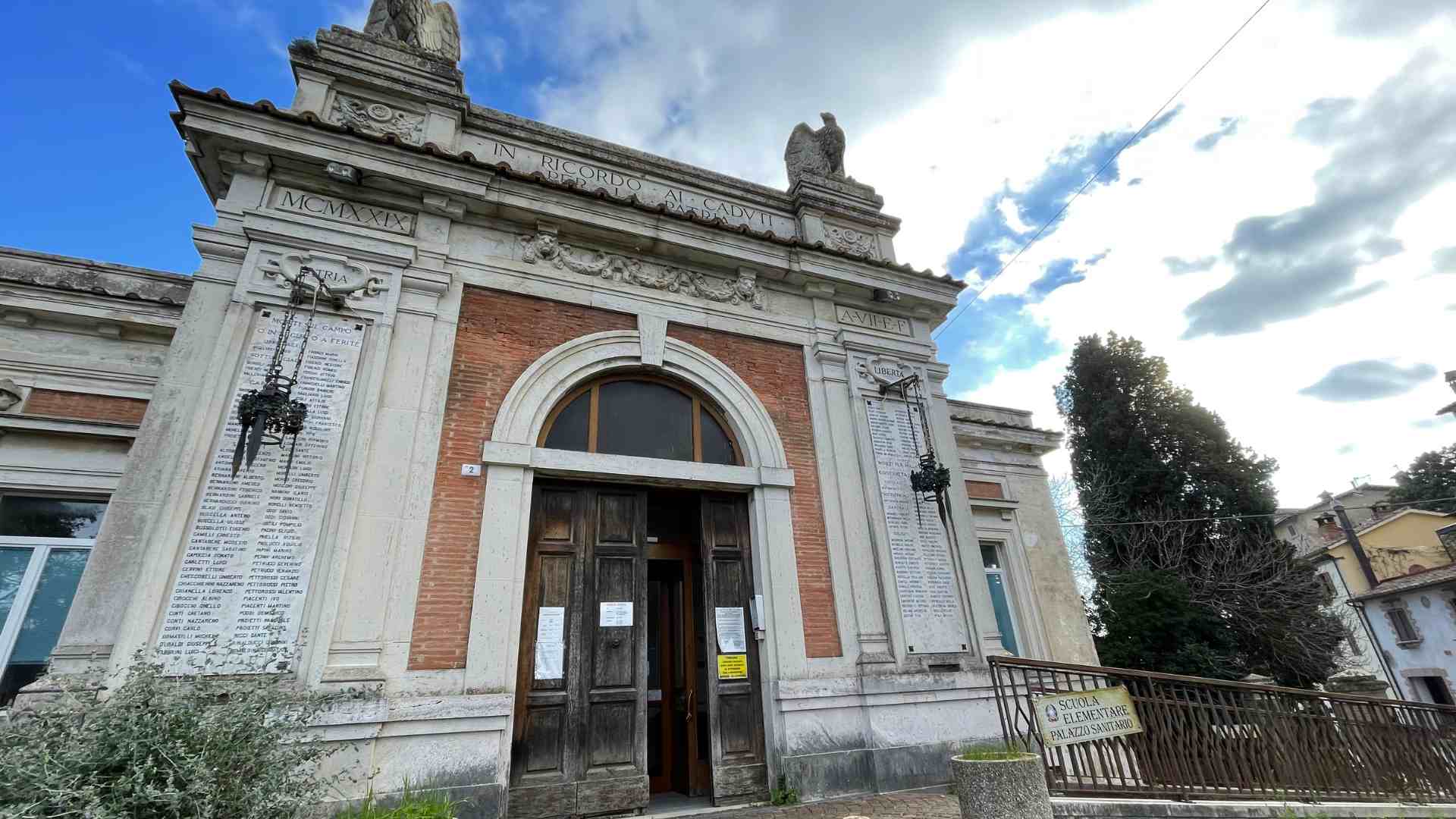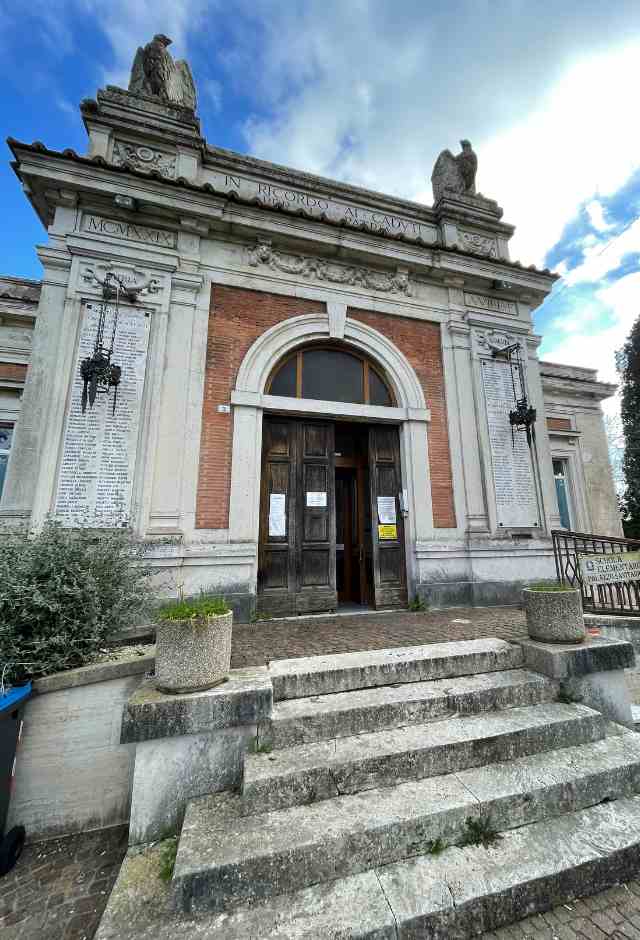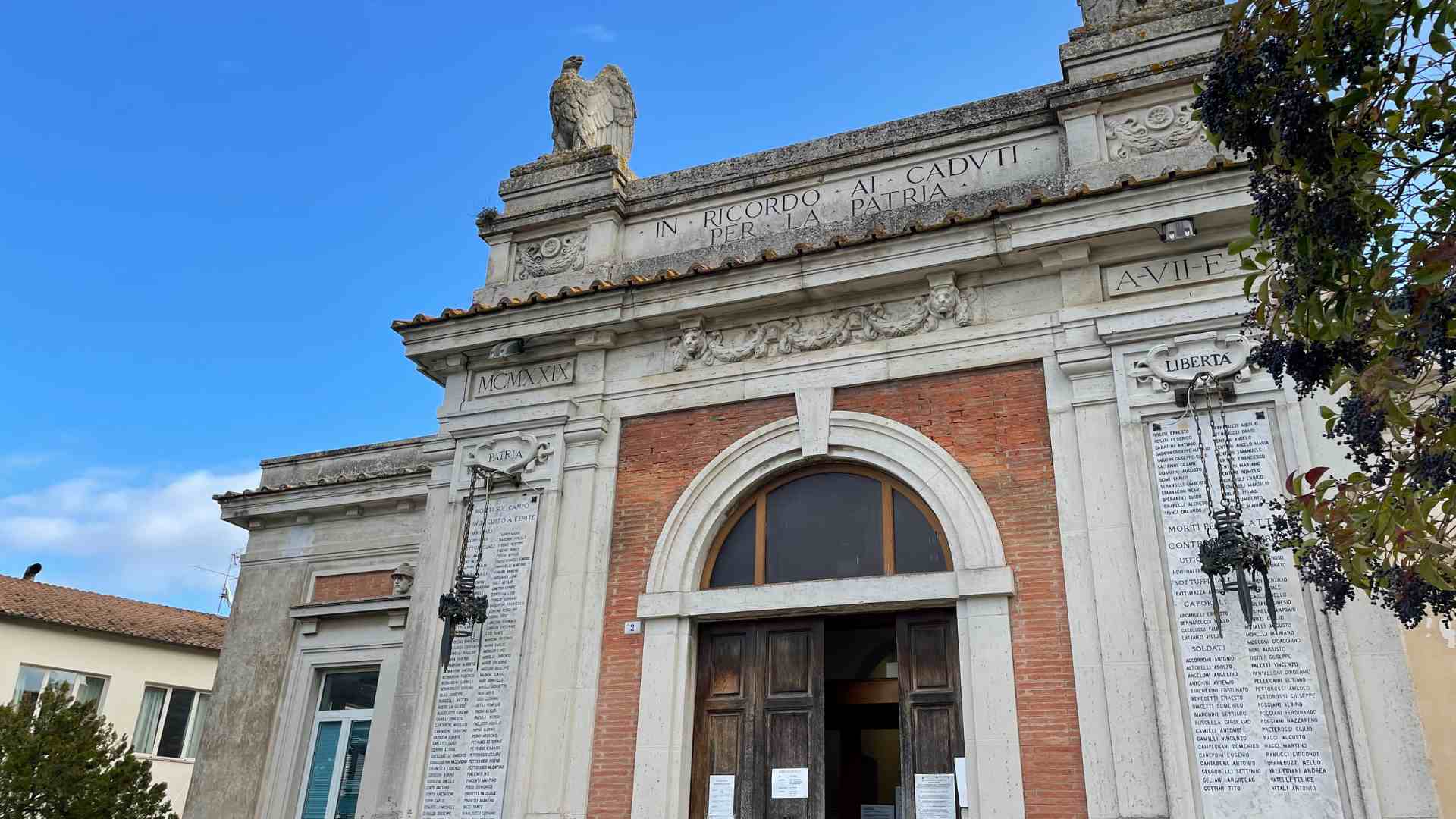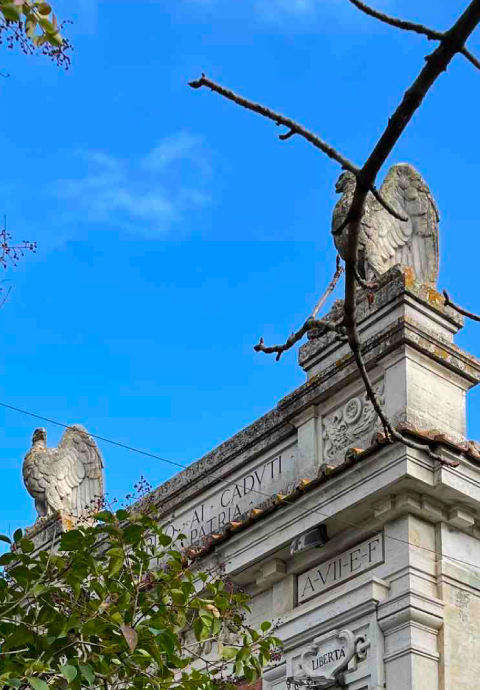
punto di interesse
point of interest


The Infermeria – Ospedaletto monument, made by the great architect Cesare Bazzani, stands near the fountain known as the Asso di Coppe, along the road to the Medieval Gate that control the entrance to Montecastrilli.
The building was designed in 1924 and built in 1928 with the aim to improve health services for the people.
The building included a dedicated area for “the infirmary-hospital,” with a dispensary department for tuberculosis patients (a widespread disease after the end of World War I), as well as a monument to the fallen for the homeland.
The left side of the war memorial bears the date 1929, which is the date of the end of the construction, while the right side bears the Roman numeral VII indicating the years since the birth of fascism, 1922.
On February 24, 1930 with the Podesta Paolo Nevi, there was the final act sanctioning the acceptance of the work.

The Infermeria – Ospedaletto monument, made by the great architect Cesare Bazzani, stands near the fountain known as the Asso di Coppe, along the road to the Medieval Gate that control the entrance to Montecastrilli.
The building was designed in 1924 and built in 1928 with the aim to improve health services for the people.
The building included a dedicated area for “the infirmary-hospital,” with a dispensary department for tuberculosis patients (a widespread disease after the end of World War I), as well as a monument to the fallen for the homeland.
The left side of the war memorial bears the date 1929, which is the date of the end of the construction, while the right side bears the Roman numeral VII indicating the years since the birth of fascism, 1922.
On February 24, 1930 with the Podesta Paolo Nevi, there was the final act sanctioning the acceptance of the work.

At first the building was put to a purely sanitary use, but in the mid-1930s it was decided to move “in the infirmary-hospital” also the elementary schools, which was located in the old town.
The building was subdivided as follows: the ground floor, which was accessed from the side entrance, to serve the various doctors, while the first and second floors served the elementary school.
In the mid-1960s with the construction of the junior high school, located next to the small hospital, the elementary school was also moved to the same building, so “in the infirmary-hospital” doctors and other health services could move to the second floor where they still serve today.

At first the building was put to a purely sanitary use, but in the mid-1930s it was decided to move “in the infirmary-hospital” also the elementary schools, which was located in the old town.
The building was subdivided as follows: the ground floor, which was accessed from the side entrance, to serve the various doctors, while the first and second floors served the elementary school.
In the mid-1960s with the construction of the junior high school, located next to the small hospital, the elementary school was also moved to the same building, so “in the infirmary-hospital” doctors and other health services could move to the second floor where they still serve today.

Montecastrilli area
discover all the points of interest of the village
Information, appointments and travel proposals on:
The Progressive Web App is part of the project “Le Terre dei Borghi Verdi”, realized in collaboration and with the contribution of Regione Umbria – Assessorato al Turismo
©2021 Le Terre dei Borghi Verdi
Le Terre dei Borghi Verdi
Welcome in Southern Umbria,
where the slowness becomes value
Information, appointments and travel proposals on:
The Progressive Web App is part of the project “Le Terre dei Borghi Verdi”, realized in collaboration and with the contribution of Regione Umbria – Assessorato al Turismo
©2021 Le Terre dei Borghi Verdi